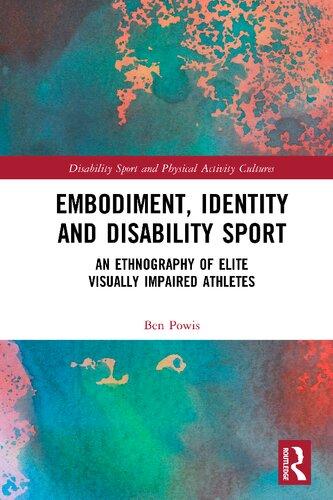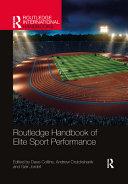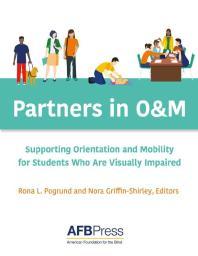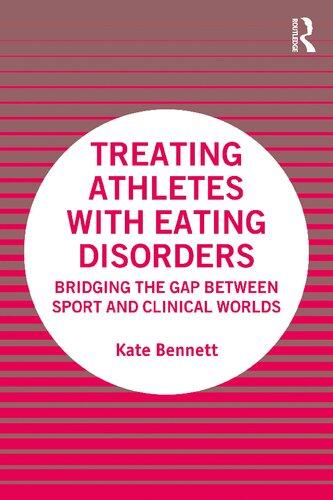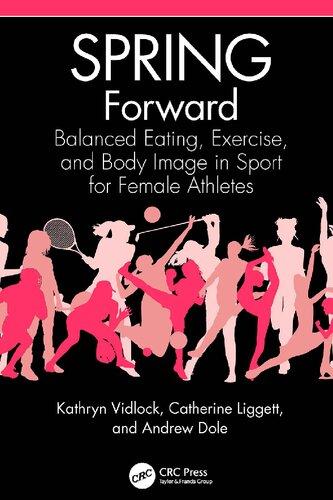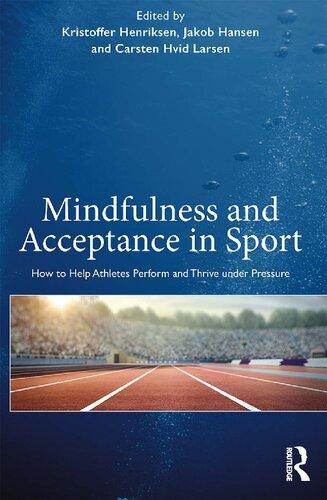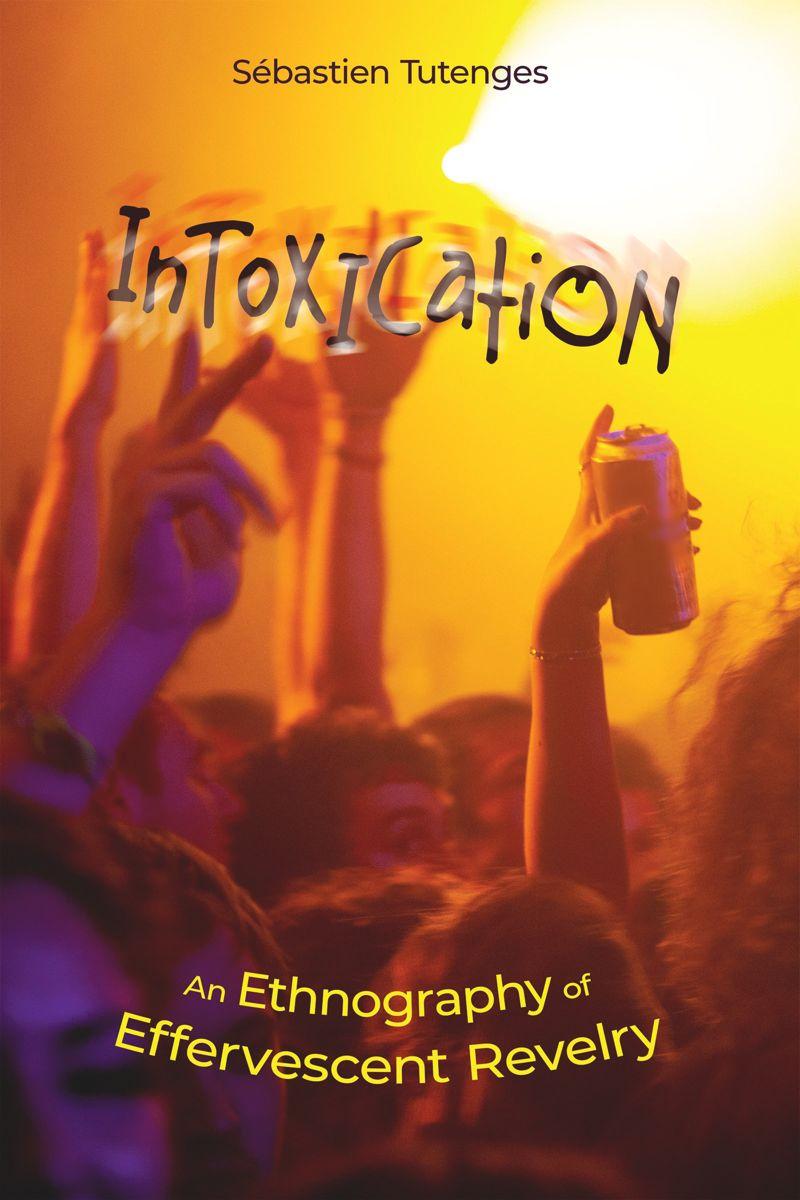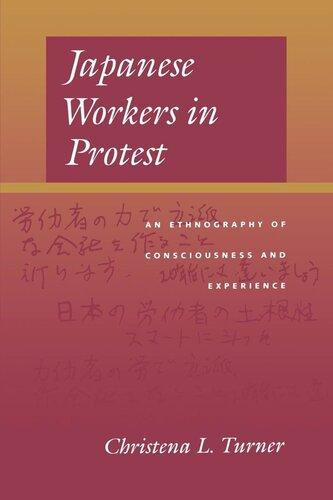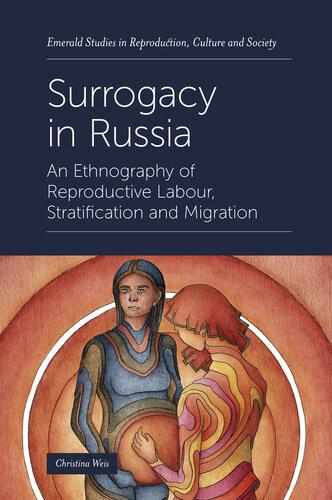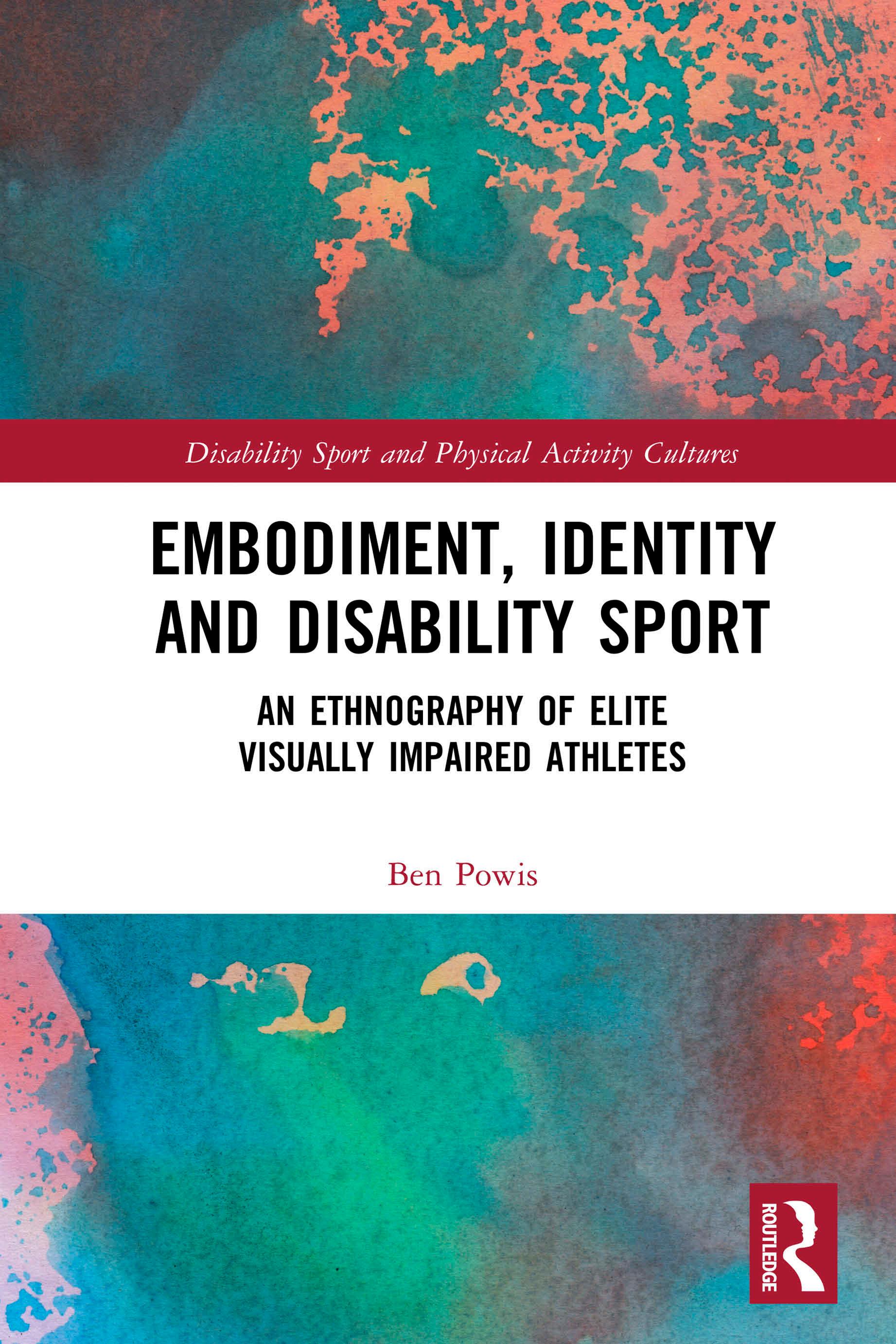The opening delivery
Whether it be the provision of high-quality coaching and facilities, the increasing influence of sport science or the use of cutting-edge technology, modern disability sport is obsessed by excellence. There has never been a better time to be an elite disabled athlete. Or so it appears at first glance. Of course, not all athletes have access to the same opportunities; for example, the disparity between athletes from the Global North and the Global South continues to widen. This is most evident in events that require the use of specialist technology, such as wheelchairs or prostheses. However, even for athletes in privileged positions, their participation in elite sport has implications. Notably, the quest for high performance places the disabled body under intense scrutiny; athletes and their impairments are constantly judged by coaches, competitors, classifiers and journalists alike. In team sport, scrutiny is exacerbated by the presence of teammates and the fierce competition for places.
But what is the social impact of this culture upon elite disabled athletes? In particular, how does their participation in disability sport fundamentally effect how they view their bodies and the bodies of others? We need to adopt a critical standpoint to comprehend these complex issues. Also, we must move beyond the hyperbole of administrators and governing bodies and listen to the athletes themselves. Using the setting of elite visually impaired (VI) cricket, this book will do just that. While not a Paralympic event, VI cricket is the epitome of an elite disabled sport and provides an original lens to critique these emerging subcultures. And do not worry if you are new to VI cricket, you only need to grasp the basics of the game to understand the athletes’ experiences. Where necessary, I will also provide additional guidance to explain the nuances of VI cricket, including rules and specific terminology.
Cricket. But not as you know it
In the build-up to England’s much anticipated 2015 VI cricket series against India, the England and Wales Cricket Board (ECB) adopted a new marketing strategy to promote the game of VI cricket. Alongside increased mass media coverage, which began with the hiring of a media officer for the 2014 World Cup in South Africa, a slogan was introduced: Cricket. But not as you know it.
This eye-catching statement was central to the ECB’s promotional campaign which, through a series of online video and posters, attempted to demystify the VI game for a mainstream audience. On one promotional poster, four male cricket players are pictured wearing official England branded kit and using conventional bats and gloves. Below the images of the players are a list of fixtures for the series featuring games at prestigious mainstream venues such as Arundel Castle and The Oval. However, on closer inspection, it is not what it seems. Two of the players are wearing dark glasses. The bowlers are bowling underarm. The batsmen are not wearing pads. And, in bold lettering, sits the aforementioned Cricket. But not as you know it. This slogan provokes a number of questions: What do I already know about cricket? How is this format different to what I already know? Why should I watch it?
The ECB’s slogan also brings to mind the famous question posed by the great Trinidadian writer and thinker C.L.R. James in the preface to Beyond a Boundary (2013): “What do they know of cricket who only cricket know?” When considering the meaning of Cricket. But not as you know it, his ruminations upon cricket and knowing are insightful: what does it mean to know a sport and how is such knowledge formed? In his reflections upon cricket and West Indian culture, James encourages us to go beyond the game itself and engage with the aesthetic, the social and the political to comprehend the significance of sport. Without this understanding of the wider context, one cannot claim to truly know sport. While underarm bowling or wearing blackout shades is integral to VI cricket – as shown on the poster – it is somewhat superfluous in knowing the game. Instead, we need to examine the social conditions of cricket and, more broadly, disability sport to know VI cricket and grasp the significance of this sporting space.
To know VI cricket is the underlying purpose of this book. By moving beyond mere novel curiosity, I endeavour to establish VI cricket as an original, enlightening “site” for sociological research. In this ethnographic account, I reflect upon my experiences of coaching, travelling and socialising with the England VI cricket team and demonstrate the importance of this subculture in understanding contemporary disability sport. This interdisciplinary text also attends to broader scholarly debates surrounding the conceptualisation of the body and the significance of sensuous experience. Embodiment and identity – and the entwined relationship of these two phenomena – are central themes of this book: how do the players’ embodied experiences of VI cricket challenge dominant conceptions of blindness, disability and sport, and what is the effect of these experiences upon their construction of identity? Through an original theoretical lens (see Chapter 2), these and many other questions will be answered.
Why VI cricket?
In 2008, I coached my first VI cricket session. As a recently qualified coach with no previous experience of this format, I was apprehensive to say the least. I watch the warm-up from the side lines and try to get my head around what
An introduction to visually impaired cricket
I am seeing. The head coach calls me over and I am introduced to the squad. He then splits the group in half and says, “Group one, come with me for some batting. Group two, go with Ben for some fielding.” Shit. What do I do? I look at my group and see a variety of people: male, female, glasses-wearers, white cane-users, some walking independently, some being guided by their teammates. I suddenly feel flustered. I go into coaching autopilot and begin to set out some cones for a familiar fielding drill. Jogging back, I call out to the players, “Okay guys, can everyone go and stand behind the blue cone.” Silence. I know now that the cone is the bane of the VI athlete – they are small, easily stepped on and even more problematic when referred to by colour – but, in that moment, I do not think. One player responds, “Where is it?” Andthenanother, “We’re blind remember!” Then, in unison, the players start laughing. Despite my embarrassment, I laugh along with them. It is obvious that I am not the first inexperienced coach to make this faux-pas and experience this rite of passage. From that moment onwards, the session goes well; I learn more about communication – both verbal and non-verbal – in the two-hour session than I did during any coaching course. My introduction to VI cricket was fascinating. Here was a sport that I was so used to watching, coaching and playing; yet, it was being played in a remarkably different way. However, I did not pursue this coaching interest any further. I coached one more session before focusing my attention to university exams and my own cricket season.
I did not encounter VI sport again until the London 2012 Paralympic Games. I had a day ticket which allowed me to attend a variety of events including Spain versus France, the blind five-a-side football semi-final. I was instantly enthralled; I had never encountered this way of being in sport before. The use of space and the senses was incredible: the players’ use of touch and sound to recognise their position on the pitch; the coach tapping the posts and crossbar, so the players could conceptualise the goal’s dimensions; the stadium announcer asking the crowd for complete silence during play rather than encouraging a loud and boisterous atmosphere. Watching Fred Villeroux, nicknamed the Blind Messi, 1 glide his way past defenders with the ball seemingly stuck to his feet even challenged my very understanding of how to be in the world.
My Paralympic experience also prompted a re-evaluation of my initial interactions with VI cricket. Although both of these sports are played in an alternative way from their mainstream versions and utilise sensory modes often neglected in sighted sport, VI cricket stood out as significant. In contrast to the structured, controlled space of blind football, the cricket pitch is a vast, open space with few haptic landmarks. Without acoustic rebound boards or the guidance of a coach or sighted goalkeeper – as found in blind football – VI cricket players are required to independently develop high levels of spatial agency. Unlike the majority of VI sports, including football, blind and partially sighted cricket players compete with and against each other and not all players are required to wear blackout shades. It is the “messiness” of the game that appeals to me. It is complex, demanding and, through the players’ performances, provides an alternative conception of the sporting body in which sight is not the prioritised, dominant mode of perception.
Returning to Cricket. But not as you know it, another area of academic interest is VI cricket’s relationship with the ECB and mainstream cricket. In the context of the widespread professionalisation and mainstreaming of modern disability sport, I examine how the organisation of VI cricket is indicative of the broader relationship between elite sport and disability. Beyond the official kit and shared venues, what are the consequences of forming an ever-closer relationship with a non-disabled governing body? The game is played in a unique, fascinating way; however, the players’ abilities and achievements are now being critiqued through the same “elite” lens as their male and female sighted contemporaries. This shift in competitive ethos – from participation to high-level performance – has changed the very nature of the game and the types of bodies and impairments that are desirable.
A note on VI cricket
It is claimed that VI cricket, or blind cricket, originated in 1922 in a hostel room on the outskirts of Melbourne, Australia (Blind Cricket Australia, n.d.). Frustrated at not being able to play sighted cricket, two blind hostel residents filled a tin can full of stones and improvised a basic version of the game. Its popularity quickly grew and started to be played during lunch breaks in the workshops where VI people were employed. In the United Kingdom, blind cricket was not played until the late 1940s (Blind Cricket England and Wales (BCEW), n.d.). Like many early disability sports, it was played by injured servicemen returning from the Second World War and was developed as a form of rehabilitation. From these early beginnings, modern VI cricket is now a highly organised and competitive sport that is played by both blind and partially sighted people.
There are two formats of VI cricket in the United Kingdom: domestic and international. Domestic cricket is structured into national and regional leagues (organised by BCEW) and a national cup competition (organised by British Blind Sport (BBS)) and has over 450 regular participants. International VI cricket, the focus of this book, is organised by the World Blind Cricket Council (WBCC) with the England and Wales Cricket Board (ECB) having financial and organisational responsibility for the England national side. Both formats share many similarities with sighted cricket2 (a bat-and-ball game; two teams of 11 players; same pitch dimensions) alongside a number of adaptions that are appropriate to the participants ’ needs. Domestic cricket is played using a size three football and brightly coloured stumps – both of which are wider and taller than those in sighted cricket. In international cricket, the players use a hard, white plastic ball containing ball-bearings which is of similar size and shape to the red ball used in sighted cricket. The ball is bowled underarm by the bowler and the batsmen typically play horizontal shots such as the sweep. There are two versions of the game: Twenty20 (20 overs 3 per side) and one-day internationals (40 overs per side). In order to participate, an individual must have an official sight classi fication which, in international cricket, range from B1 to B34 with players wearing coloured wrist bands
An introduction to visually impaired cricket 5 that correspond to their classifi cation category. To provide an equal balance of sight levels, each team of 11 players must fulfilaspeci fic quota of at least four B1 (totally blind) players on the pitch. The remaining seven places are made up of B2 and B3 (partially sighted) players – with a maximum of four B3s. All B1 players are required to wear blackout shades to nullify light perception (World Blind Cricket Council, n.d.). During the match, when batting, the B1 player must use a runner 5 – the B2 players are also given that option – and any runs that a B1 player scores will be doubled. When fielding, at least 40% of the overs must be bowled by the B1 players in the team.
The fieldwork
This book is based upon my doctoral research undertaken between 2013 and 2016. During this period, I conducted ten months of ethnographic fieldwork with the England VI Cricket team using two methods: participant observation (phase one) and semi-structured interviews (phase two). My fieldwork was punctuated by the 2014 World Cup in South Africa (November 2014) which was unsurprisingly the main focus of the English squad and coaching staff. This meant that I was restricted in conducting timetabled interviews until the tournament had finished. Although the dual phased nature of my approach was un-planned, the first phase was critical in establishing my credentials within the squad. It also allowed for more in-depth interactions and furthered my knowledge of the key issues in the environment.
The national squad was purposively selected due to the range of the participants’ sight classifications (ranging from B1 to B3). It was important to have this representational spread to understand the significance of impairment type in the participants’ experiences of being VI and of playing cricket. As well as representing all sight levels, the sample represents a variety of ages (18–54), ethnicities and geographical locations. The playing members of this squad (16 people) were interviewed and involved, to varying extents, during participant observation. Because I was granted access to the England men’s team, the sample consists of male participants only. When I started my research, a female equivalent team did not exist. VI cricket remains a marginal activity for female participants; however, there has been notable progress with the establishment of a BCEW-affiliated women’s team in 2015 and their first international series which was played against the West Indies in 2018.
This study – whether in the design, implementation, analysis or write-up – was underpinned by a key objective: to conduct critical social research that values and accurately represents the voices of the blind and partially sighted participants. While not overtly focusing on social justice, my epistemological standpoint inherently values the participants’ testimonies and positions them as the authoritative knowers within the social space of VI cricket. The “process of interaction” (Sparkes and Smith, 2014) between the participant and the researcher –an integral aspect of qualitative research – has traditionally led to disabled
An introduction to visually impaired
participants assuming subservient roles within much disability sport research (Fitzgerald, 2009). Drawing upon my academic experiences as a non-disabled researcher in various disabled research fields, I believe it is important to counter this power dynamic and provide the participants with a platform to express their often-marginalised voices. Yet, providing disabled participants with a voice can also be a problematic practice (Ashby, 2011). It can reinforce an able-bodied /disabled dichotomy and imply that a non-disabled researcher, rather than a disabled researcher, is needed to represent this “separate” social group. I am not a non-disabled “knight in shining armour” heroically representing helpless VI people nor do I think that VI researchers are incapable of conducting research; I am a disability advocate who is passionate about documenting the experiences of VI people who have not previously had the opportunity to share their knowledge. As a sighted, non-disabled male researcher, I was all too aware of the historical hostility towards non-disabled researchers from certain areas of the disabled community (Branfield, 1998) and wanted to address this in my ethnographic approach. A reflexive ethnography can represent the heterogeneity of disability experience and “provide voices within the academy for those who have not had them in the past and to explain the prevailing systems of domination and oppression within contemporary (sporting) cultures” (Silk, 2005: 70). If the researcher is reflexively aware of the issues surrounding authority and empowerment, ethnographic writing can be used to challenge inequality (Davis, 2000). Central to John Davis’s (2000) approach, and the approach adopted in my research, is producing counter hegemonic writing. Acknowledging that disabled participants occupy insider positions (Barnes and Mercer, 1997; Kitchin, 2000), the written account should privilege the participants’ experiences; thus, “the authority of the writer is dispersed, not by letting others actually write the final text, but by letting their variety of voices have equal authority” (Davis, 2000: 197). For further discussion on emancipatory paradigms, positionality and voice in relation to this study, see Powis (2018).
Phase one: participant observation
I was granted access to the VI squad’s monthly training weekend and, through negotiations with the ECB and the squad’s head coach, was invited to be a support coach during my fieldwork (starting in June 2014). Through this role, I had a unique status within the group which meant I could spend long periods of time socialising with the players. I had adopted the middle ground in which I was not fully affiliated to either the coaching staff or the players. The advantage of having a foot in each camp was the ability to build relationships with all members of this social space and develop my knowledge of VI cricket. There were regular opportunities to hang out (Woodward, 2008) with the players away from other members of authority and outside of the training sessions, such as in the hotel bar or a local restaurant.
The most fruitful interactions were the train journeys to and from the monthly training weekends. I would regularly travel with three players who
An introduction to visually impaired cricket were based in Brighton and we would meet up with several other players in London on route to Birmingham or Great Malvern.6 In spite of the early morning starts and various bus replacement services, these occasions provided time to strengthen these relationships. These naturally occurring oral accounts (Hammersley and Atkinson, 2019) were vital in understanding more about the players in the squad prior to semi-structured interviews. Alongside cards games, quoting Alan Partridge7 and general conversation about their lives outside of cricket, I used these journeys to gauge their opinions on various VI cricketspecific issues. Although I was wary of overly relying on the same people for information (Ashworth, 1995), the train journey provided a setting where the players felt comfortable in speaking openly.
While my membership within the group was principally as a researcher and then as coach, assimilation was a quick process. Due to my experiences of playing team sport, the masculine team culture was a familiar one. My rapport with the players did increase over the period of participant observation with “banter” and shared humour playing a central role (for further detail, see Powis, 2018). These initial social interactions began to reveal the masculine culture within the team and the role of banter in enforcing this culture, which is fully examined in Chapter 6. Despite not being VI, my status as a young male cricket player with similar interests and cultural references as many of the players was integral to developing such trusting and fruitful relationships.
As a coach, I was also afforded the opportunity to observe VI cricket up-close and grasp how it is played. My own sensuous experiences – from my immersion in the auditory structuring of the cricket space to the participation in training drills – served as a sensory benchmark in which I could compare my experiences to those of the players. These initial reflections were recorded in the early stages of participant observation while I remained sensually open (Stoller, 1989). By taking part in coaching and playing VI cricket, I learnt from the inside (Vannini et al., 2013) and this informed the questions that I asked and the methodological strategies that I used during the semi-structured interviews.
Phase two: semi-structured interviews
Following the World Cup, phase two began in February 2015. As agreed with the head coach, I conducted interviews during the March and April training weekends. I was allocated a one-hour timetabled slot for each player in the weekend schedule and provided with a private room. Due to the hectic scheduling of the training weekends, four interviews were conducted in additional locations with players who were locally positioned to Brighton. These took place at either the player ’s home or in my flat in Brighton. All 16 members of the squad took part in individual interviews which ranged from 45 minutes to two hours in length.
Despite spending a significant amount of time in the field during the first phase of primary research and developing meaningful relationship with the players, I had garnered only a snapshot of the participants’ narratives. Particular relationships
An introduction to visually impaired
were stronger than others, but even in those cases, key pieces of information such as sight classification and their impairment had not always been shared. Once in the interview setting, I began all interviews with a simple question: “when did you start playing VI sport?” While appearing to be an innocuous icebreaker, it addressed two important pieces of information: first, whether the player’s impairment is congenital or acquired and, second, whether they attended a mainstream educational institution or specialist education. Developing a clearer understanding of the players’ narrative was vital in asking pertinent questions.
I also made changes to my interviewing style (Moore, 2002; Hammer, 2013). Rather than using non-verbal communication, such as head nodding and eye contact, I engaged in active listening. Having worked with VI people prior to the interviews, I have learnt to provide continual noises of agreement – such as uh huh, mmm huh and okay – to demonstrate my engagement in a conversation. During the interviews and in all informal conversations, I used this approach in place of the commonly used head-nod to make the players feel more comfortable. Significantly, active listening is not disruptive; it can be used to encourage interviewees to speak for longer and add depth to their responses without interruption. Through these subtle changes, I engaged with the specific needs of the VI participants and attempted to create an environment that encouraged them to share their stories.
To explore the players’ sensuous experiences of VI cricket within an interview setting, which is the focus of Chapter 3, I employed an original soundscape elicitation method (for an in-depth discussion of this method, see Powis, 2019). This immersive approach uses composed auditory tracks of the players’ participation as an interactive object. During the interviews, the players were invited to listen to these tracks using over-ear Bluetooth headphones. Due to the fast-paced, fleeting nature of physical activity (PA), experiences are so thoroughly embodied that it is difficult for the participants to be reflexive and articulate their own perceptual process. By introducing a sensuous point of reference removed from the act of participation, the players were prompted to critically reflect upon their experiences of VI cricket. Although a purely auditory-based method, soundscape elicitation does not restrict participants to only discuss auditory perception; it is a multi-sensory trigger which, when used effectively, can encourage the articulation of rich and wide-ranging accounts.
Overview of the book
In the spirit of C.L.R. James, this book endeavours to go beyond boundaries. As established throughout this introductory chapter, VI cricket is of academic interest; yet, the wider application of this book transcends this sporting subculture. It provides an original theoretical lens to understand disabled peoples’ experiences of sport and PA. Alongside the critiques of elite disability sport and the power and influence of non-disabled governing bodies, the text also centralises the social importance of cricket – both sighted and VI – in the formation of identity. For readers outside the field of sport and PA, the
An introduction to visually impaired cricket interdisciplinary nature of this book attends to wider theoretical discussions pertaining to the body, sensuous experience and space. By engaging with contemporary disability theory – beyond the cursory social/medical model debate found in much of the disability sport literature – I also intend to appeal to readers with an interest in disability and embodiment. It is through these wide-ranging and diverse themes that I hope this book can engage both an academic and non-academic audience and extend its reach far beyond the boundary of the VI cricket field.
Chapter 2 begins by unpacking some of the key debates within contemporary disability studies and contemplates why we need critical disability sport scholarship. During this discussion, there is a specific focus upon how disability scholars theorise the relationship between disability and impairment. This chapter then establishes this book’s original theoretical framework: an embodied approach to disability sport. This approach, which draws upon sociology, phenomenology and contemporary disability studies, posits an understanding of embodiment which engages with the phenomenological lived body and the social dimension of corporeal experience. Building upon this interpretation of embodiment, the three key theoretical components of this approach – Reviving the Body, Breaking Down Binaries and Agency and Resistance – are outlined and the significance of these components is illustrated.
Chapter 3 explores the sensuous experience of playing VI cricket. It poses two questions: first, how do VI athletes conceptualise and negotiate this sporting space and, second, how do their experiences resist the dominant conceptions of blindness, disability and sport? The answers to these questions have significant implications for wider understandings of physical performance and reveal an unexamined dimension of the body/sport relationship. Using the concept of somatic work, this chapter then examines how the players develop strategies to endow this vast, featureless space with social value. Central to these strategies is VI cricket’s auditory structure, which is discussed in two sections: Intercorporeal perception: the role of linguistic sound and Auditory knowledge: the role of non-linguistic sound The importance of haptic and visual perception is also considered.
Chapter 4 examines the extent to which elite disability sport is an empowering practice. While the topic of empowerment and disability sport is well debated, VI cricket provides a new perspective upon this debate. This chapter follows two broad themes: the players’ experiences of recreational sport – both disabled and non-disabled – and the players’ experiences of elite disability sport. The players’ initial experiences of finding VI sport demonstrate the potential “value” of disability sport and PA, both socially and in understanding athletes’ corporeal abilities. In spite of these empowering experiences, this chapter then evaluates the transition from recreational to elite level sport and the disempowering consequences of this shift in competitive ethos. In particular, there is a focus upon the professionalisation of disability sport and how the relationship with mainstream organisations is impeding the empowering potential of elite disability sport.
Chapter 5 focuses upon the classification process and the resulting valorisation of the disabled sporting body. To begin, this chapter explores the role of official sight classification in an elite environment and its impact upon disabled athletes’ identities. Notably, one of the significant consequences of classification is the rumour and gossip relating to intentional misrepresentation. This chapter examines why this social phenomenon exists and considers why certain athletes are the focus of these accusations. The remainder of the chapter then explores the relationship between the blind players (the B1s) and the partially sighted players (the Partials). At the heart of this relationship is a hierarchy of sight, in which the players with the highest levels of sight are most valued. This chapter concludes by considering the underlying effect of this power structure and the tensions it has created between the two social groups.
Chapter 6 analyses how VI athletes form their identities through elite disability sport. Initially, this chapter examines the contestation of a disabled identity in this social space and reflects upon the absence of disabled terminology in contemporary disability sport. Following this, the chapter then discusses how the players negotiate their blind/VI identities. This discussion explores both the role of VIspecific language and terminology and the significance of embodied experience, particularly when considering why certain players choose to “pass” as sighted. Finally, the remainder of the chapter explores the construction of a shared athletefirst identity that does not celebrate disability or blindness. This male-dominated sighted world is built upon “banter” and shared humour, which serves to reinforce the disparity in power between the blind and the partially sighted athletes.
Chapter 7 brings together the book’s substantive findings and is organised into three distinction sections. First, this chapter reflects upon the salience of an embodied approach to disability sport and uses examples from the book to demonstrate this framework’s contribution to critical disability sport scholarship. Second, this chapter returns to Cricket. But not as you know it and reflects upon its accuracy in representing VI cricket and the athletes at the centre of this ethnographic research. In doing so, this chapter reflects upon the book’skey themes and considers how these themes can help us understand beyond the boundary of VI cricket. Finally, there is a moment of contemplation for the future direction of elite disability sport, explicitly in light of its ever-strengthening relationship with mainstream sport.
Notes
1 In reference to Lionel Messi, Argentinian footballer.
2 There is not enough space in this book to adequately explain the laws of cricket. However, if you are new to the game, I recommend the MCC’s (Marylebone Cricket Club, n.d.) online guide to the laws on their website. The MCC are the custodians of the laws of cricket and continue to be responsible for the writing and interpretation of these laws.
3 In cricket, an over consists of six legal deliveries bowled from one end of the pitch. This is typically delivered by a single bowler.
4 These visual classes are universal across all visually impaired sport and are based upon two measures: visual acuity and visual field. B1: Visual acuity lower than
An introduction to visually impaired cricket 11
LogMAR 2.6; B2: Visual acuity ranging from LogMAR 1.5 to 2.6 (inclusive) and/or visual field constricted to a diameter of less than 10 degrees; B3: Visual acuity ranging from LogMAR 1.4 to 1.0 (inclusive) and/or visual field constricted to a diameter of less than 40 degrees (IBSA, n.d.).
5 As the name suggests, a runner is somebody who runs between the wickets for a batsman who is unable to run. In VI cricket, this role is usually performed by a B3 classified player.
6 These journeys varied in length. Typically, Brighton to Birmingham on the train takes around three hours and Brighton to Great Malvern takes around four and a half hours.
7 A legendary comedy character played by British comedian Steve Coogan.
References
Ashby, C. (2011). Whose “Voice” Is It Anyway? Giving Voice and Qualitative Research Involving Individuals that Type to Communicate. Disability Studies Quarterly, 31(4). DOI: 10.18061/dsq.v31i4.1723.
Ashworth, P.D. (1995). The Meaning of “Participation” in Participant Observation. Qualitative Health Research, 5(3): 366–387.
Barnes, C. and Mercer, G. (1997). Breaking the Mould: An Introduction to Doing Disability Research. In C. Barnes and G. Mercer (eds.), Doing Disability Research (pp. 1–14). Leeds: Disability Press.
Blind Cricket Australia. (n.d.). History. Available at: www.blindcricket.org.au/history.html.
Blind Cricket England and Wales. (n.d.). The Game. Available at: www.bcew.co.uk/thegame/.
Branfield, F. (1998). What Are You Doing Here? “Non-Disabled” People and the Disability Movement: A Response to Robert F. Drake. Disability & Society, 13(1): 143–144. DOI: 10.1080/09687599826966.
Davis, J.M. (2000). Disability Studies as Ethnographic Research and Text: Research Strategies and Roles for Promoting Social Change? Disability & Society, 15(2): 191–206. DOI: 10.1080/09687590025621.
Fitzgerald, H. (2009). Disability and Youth Sport London: Routledge. DOI: 10.4324/ 9780203889732.
Hammer, G. (2013). “This Is the Anthropologist, and She Is Sighted”: Ethnographic Research with Blind Women. Disability Studies Quarterly, 33(2). DOI: 10.18061/dsq. v33i2.3707.
Hammersley, M. and Atkinson, P. (2019). Ethnography: Principles in Practice. London: Routledge. DOI: 10.4324/9781315146027.
International Blind Sports Federation. (n.d.). Classification. Available at: www.ibsasport. org/classification/
James, C.L.R. (2013). Beyond a Boundary: 50th Anniversary Edition. Durham: Duke University Press. DOI: 10.1215/9780822376255.
Kitchin, R. (2000). The Researched Opinions on Research: Disabled People and Disability Research. Disability & Society, 15(1):25–47. DOI: 10.1080/09687590025757.
Marylebone Cricket Club. (n.d.). All the Laws of Cricket. Available at: www.lords.org/ mcc/laws
Moore, L.W. (2002). Conducting Research with Visually Impaired Older Adults. Qualitative Health Research, 12(4): 559–565. DOI: 10.1177/104973202129120070.
Powis, B. (2018). Transformation, Advocacy and Voice in Disability Sport Research. In T. F. Carter, D. Burdsey and M. Doidge (eds.), Transforming Sport: Knowledges, Practices, Structures (pp. 248–259). London: Routledge. DOI: 10.4324/9781315167909-18.
12 An introduction to visually impaired cricket
Powis, B. (2019). Soundscape Elicitation and Visually Impaired Cricket: Using Auditory Methodology in Sport and Physical Activity Research. Qualitative Research in Sport, Exercise and Health, 11(1):35–45. DOI: 10.1080/2159676X.2018.1424648.
Silk, M.L. (2005). Sporting Ethnography: Philosophy, Methodology and Reflection. In D. L. Andrews, D.S. Mason and M.L. Silk (eds.), Qualitative Methods in Sports Studies (pp. 65–103). Oxford: Berg.
Sparkes, A.C. and Smith, B. (2014). Qualitative Research Methods in Sport, Exercise and Health London: Routledge. DOI: 10.4324/9780203852187.
Stoller, P. (1989). The Taste of Ethnographic Things: The Senses in Anthropology. Philadelphia, PA: University of Pennsylvania Press. DOI: 10.9783/9780812203141.13.
Vannini, P., Waskul, D. and Gottschalk, S. (2013). The Senses in Self, Society, and Culture: A Sociology of the Senses London: Routledge. DOI: 10.4324/9780203805985.
Woodward, K. (2008). Hanging Out and Hanging About: Insider/Outsider Research in the Sport of Boxing. Ethnography, 9(4): 536–560. DOI: 10.1177/1466138108096991.
World Blind Cricket Council. (n.d.). About WBCC. Available at: http://worldblindcricket. org/about.html
2 Disability, sport and social theory
In many disabled communities, sport is problematic. Despite the temporary exposure and widespread admiration that comes from the Paralympic Games and other mega events, the Disability Rights Movement is understandably distrustful of elite sport (Braye et al., 2013; Bundon and Hurd Clarke, 2015). The medicalised, classification-focused performance culture is clearly at odds with a movement traditionally concerned with the marginalisation and everyday oppression of disabled people. The same parallels can also be drawn between disability sport and physical activity (PA) scholars and disability studies scholars. What is the value of social research into disability sport and PA? Does it challenge oppression? Can it be applied to the everyday lives of disabled people? The answer to these questions is often underpinned by the authors’ choice of theoretical framework. Yet, selecting and applying disability theory can feel like entering a political minefield – especially for sport and PA researchers. In this chapter, I intend to offer some guidance through the key debates within contemporary disability studies and demonstrate that engaging with sociological theory still matters. There is a specific focus upon how disability scholars theorise the relationship between disability and impairment and why this remains such a contentious and politically loaded issue. Building upon these debates, I discuss the significance of embodiment in understanding disabled peoples’ lived experiences and establish this book’s theoretical framework: an embodied approach to disability sport. This framework, which draws upon sociology, phenomenology and contemporary disability theory, has three components: Reviving the Body, Breaking Down Binaries and Agency and Resistance. Due to this book’s subject matter, my approach also engages with social theory relating to blindness and sensory impairment. When outlining each of these components, I consider how this framework can be used to explore the lived experiences of disabled athletes in a variety of sport and PA settings.
Why does theory matter?
Over the past two decades, disability has emerged as a central research site for the sociology of sport. This emergence, which has also been evident in a number of academic disciplines including psychology and anthropology, has provided
Disability, sport and social theory
a platform for disabled people to share their experiences of disability sport and PA. It has also given disabled and non-disabled academics a platform to engage with a range of interdisciplinary social theory and critically theorise notions of disability and impairment. In this context, I define being critical as the practice of challenging dominant modes of understanding and questioning things that we may take-forgranted. However, there remains a paucity of high-quality empirical research that meets these aspirations. This is particularly apparent from a sociological perspective. Despite the work of critical scholars like Karen DePauw, David Howe and Danielle Peers, much of contemporary disability sport literature is either undertheorised or does not engage with disability theory at all.
So, why does this matter? Academics and, more generally, social theorists have often been accused of producing introspective work that is of little relevance to the real world. Ponderous, jargon-filled social theory frequently appears to be written in such a way that it is impenetrable to everyone apart from a select group of scholars. Often this is a conscious decision made by the author to preserve the “sanctity” of academia and exclude those who cannot decode such texts. But theory does not need to be like this. Theory can be cutting-edge and innovative. Theory can illuminate ideas – both old and new – and challenge us to think differently. Theory can be lived rather than abstract and attend to issues which are experienced every day. This is important when theorising disability, which in comparison to other forms of affirmative identity is still in its infancy.
For many, social theories are flexible tools which can be used interchangeably. Yet, for others, their worldview and approach to research is wholly underpinned by a singular social theory or what Jean-François Lyotard (1984) would describe as a metanarrative. These grand accounts, which dominated early sociological perspectives such as Marxism and functionalism and still remain in contemporary sociology, attempt to provide a universal explanation for all that happens in society. Social theories exploring identity and identity movements can be particularly dogmatic in their approaches – and the disability studies movement is no different. In fact, I believe that this is one of the main reasons that sport and PA researchers are reluctant to identify with disability theory.
As an illustration, I recently presented my research at a qualitative research conference. During the customary time for questions and feedback, an academic forthrightly offered a critique of my theoretical framework. He began by saying, “Theories are like toothbrushes: everybody has one and nobody wants to use anybody else’s.” Without a hint of irony, he then suggested that I use a different theoretical approach – his theoretical approach – and wentontoproffer his own conceptualisations of disability and sport. This scene is replicated in academic conferences and lecture theatres across the world: an entitled academic explaining how their choice of social theory offers the definitive answer or framework to understand a particular phenomenon.
In disability studies, the proliferation of contemporary social theories has provided new ways of understanding disabled peoples’ experiences of disability. However, according to Colin Barnes (2012: 22), this shift away from the materialist, emancipatory traditions of the British social model has led to “a
Disability, sport and social theory 15 politically benign focus on culture, language and discourse.” In his defence of the disability/impairment distinction – a binary which is discussed in the next section –he also argues that contemporary theories have “little, if any, meaningful or practical value in terms of research, policy and practice” (22). Barnes’s arguments are indicative of the factional nature of the disability movement. British social model theorists – such as Barnes and Mike Oliver – have often positioned their approach in opposition to alternative theoretical frameworks: initially, in opposition to the medical model and medical sociology and, latterly, in opposition to critical disability studies (CDS) emanating from Britain, North America and Australia. This either/or principle has created “highly artificial, hermetic, and moral boundaries” (Schillmeier, 2010: 111) that separates those fighting for good (i.e. the British social model) and those enforcing the bad (i.e. the medical model). As disability studies developed as a viable field of enquiry, alignment with theory was portrayed – andcontinuestobe – as a political and moral choice. For researchers, especially those new to the field, this litmus test (Shakespeare and Watson, 2010: 57) puts us in a compromising position: align with this model or be seen as not representing disabled people.
Despite the British social model’sinfluence in challenging multiple forms of oppression and establishing disability as a political identity, this theoretical approach has stagnated and significantly “has not translated into an adequate body of empirical research” (Shakespeare, 2013: 1). While Barnes accuses contemporary theorists of developing theory that lacks real-world “value,” the same should also be said about the British social model. The separation of disability from impairment, which may serve as a useful political statement, means that this reductionist approach cannot fully account for the lived experiences of disabled people. The same critique can also be applied to CDS – an issue that is considered later in this chapter. In the context of sport and PA, the British social model remains dominant (Bundon and Hurd Clarke, 2015). And I believe that this is often acursoryaffiliation rather than an in-depth engagement with the principles of this approach: a tick box exercise which satisfies both author and reader. This also applies to sport policymakers who use the British social model to demonstrate their association with the disabled community and “real world” issues.
But what are the consequences of adopting the British social model upon empirical research into disability sport and PA? The primary focus upon social, political and economic inequality results in an absent body (Leder, 1990; Shilling, 2012). If impairment is ignored, I believe we cannot adequately examine issues of classification, valorisation or empowerment – all of which are integral to contemporary disability sport. Coming back to the earlier toothbrush analogy, I do not intend to rubbish all existing disability theory and then offer my own framework as the “answer.” I will offer my own take on which theoretical strands I see as most relevant and useful for my research, but I encourage you to select the theoretical framework that you think will be most effective for your research. Do not feel obliged by tradition or dominant voices but do think about the implications – both socially and empirically – of adopting your selected approach. And, ultimately, remember that the British social model is not the only sociologically engaged way of theorising disability sport and PA.
Disability, sport and social theory
In the next section, I evaluate how a range of theoretical approaches conceptualises the disabled body and the relationship between disability and impairment. Despite the continuing popularity of theorists Michel Foucault and Pierre Bourdieu in the sociology of disability sport, the selected theories here are overtly disability-focused. As discussed above, a critique of the very notions of disability and impairment should be fundamental to all sport and PA research. For an overview of the use of disability theory in sport and PA, Brett Smith and Andrea Bundon (2018) provide an excellent summary of four dominant approaches: the medical model, the British social model, the social relational model and the human rights model of disability. Although I draw upon three of these dominant theories below, they give in-depth sport and PA-related examples and also discuss the future theoretical directions in this field. Smith and Bundon (2018: 30) argue that “as scholars and practitioners working in disability sport, we need to be equally committed to engaging with the topic of disability as we are to studying sport.” I wholeheartedly agree with Smith and Bundon and hope that this chapter – and the remainder of this book – demonstrates the various ways in which such a commitment can be achieved.
The body, impairment and disability theory
At this juncture, it is important to reinforce that the purpose of this chapter is not to present an overview of all disability theories; there is simply not enough room to do this. Instead, I have selected seven theoretical approaches that overtly engage with the relationship between disability and impairment. Also, I am not necessarily offering an overall critique of these approaches; again, my focus is on how the disabled body is being conceptualised by social theorists and how their work can be applied to the study of disability sport and PA. My debate is informed by the work of three British academics: Carol Thomas, Dan Goodley and Tom Shakespeare. Although they write from differing perspectives, these authors provide comprehensive and sometimes conflicting overviews of disability theory. As this section progresses, I will signpost their key texts and explain the importance of their ideas.
To understand the contested nature of the body and impairment amongst disability theorists, we need to begin with the medical model This approach positions disability as a medical concern and social deviance to be fixed (Davis, 2002; Barnes and Mercer, 2003). Rather than recognising the complexity of disability, the root of all disadvantage lies with an individual’s impairment (Crow, 1996) which, once diagnosed, requires a cure or rehabilitation (Campbell and Oliver, 1996; Marks, 1999). Mike Oliver (1990) conceptualised this as the personal tragedy theory. By focusing squarely on the physical, disabled people are portrayed as victims of circumstance. This notion of victimhood affects everyday interactions, social policies and the dominant attitudes of health professionals and government officials. It also reinforces the contention that all disabled people are helpless and must overcome the individualised issue of impairment. The “overcoming” narrative is a well-established discourse – especially in the mainstream media – which serves to devalue disabled
Disability, sport and social theory 17 people and reduces the complexity of disability experience (Titchkosky, 2007). To overcome disability is also central to disability sport coverage: athletes are routinely portrayed as brave inspirations who succeed despite their impairment.
By essentialising impairment as something to be fixed or overcome, the medical model conceptualises disability as a social deviance. This categorisation of “deviant” bodies – including the disabled body – and the management of these bodies underpinned the theoretical approaches of early medical sociology. Through the structural functionalism of Talcott Parsons (1951) and, later, the symbolic interactionism of Erving Goffman (1963), being disabled or having a long-term illness was defined as a spoiled identity that must be institutionally managed to meet “normal” expectations. Despite portraying disabled people as deviant and abnormal and describing impairment as an abomination of the body, Goffman’s analysis of stigma still has considerable influence in medical sociology. In fact, Carol Thomas (2007: 15) argues that “all theorisations of illness and disability in medical sociology deploy the social deviance lens –whether sociological preoccupations lie with social order and structure or with social action and agency.” The work of Parsons and Goffman and the spectre of deviance continue to hang over disability theory; this is especially apparent in the field of exercise and health which is driven by rehabilitation and cure.
Medical sociologists also influenced major social policy such as the World Health Organisation’s (WHO) (1980) International Classification of Impairments, Disabilities and Handicaps (ICIDH) schema. This much maligned document (see Barnes and Mercer, 2003; Edwards, 2005) established a conceptual framework for understanding disablement and defined three interrelated concepts in this process:
Impairment: any loss or abnormality of psychological, physiological, or anatomical structure or function.
Disability: any restriction or lack (resulting from an impairment) of ability to perform an activity in the manner or within the range considered normal for a human being.
Handicap: a disadvantage for a given individual, resulting from an impairment or a disability, that limits or prevents the fulfilment of a role that is normal (depending on age, sex, and social and cultural factors) for that individual.
(1980: 27–29)
The ICIDH schema has several weaknesses: it implies that individuals are disadvantaged because of their disability alone (Bickenbach et al., 1999); it uses normal and abnormal uncritically (Wendell, 2006); and it conflates impairment and disability (Edwards, 2005). In 1999, the revised ICIDH-2 (WHO, 1999) addressed some of these criticisms with significant changes in language by replacing disability and handicap with activities and participation.Italso recognised the dynamic relationship between health conditions and contextual factors – both personal and environmental – in understanding disability; however, the damage of the original ICIDH upon definitions of disability was irreversible.
Disability, sport and social theory
Mike Bury, a key contributor to ICIDH and ICIDH-2, argues that the British social model’s criticism of the WHO schema was ideologically motivated (2000: 1077). Although accused of writing from a medical model perspective, Bury (1996) maintains that the ICIDH was in response to dominant medicalised theory and aimed to provide a socio-medical understanding of disablement. The ICIDH also informed the WHO’s (2001) International Classification of Functioning, Disability and Health (ICF) – a biopsychosocial approach that accounts for the biological, individual and social aspects of disability (see Imrie, 2004; Goodley, 2014a, for in-depth reviews of ICF). The ICF’sdynamic framework (Shakespeare and Watson, 2010) reflects the complexity of disability experiences and demonstrates how disability and health can be theorised through international health policy. To fully grasp the complex relationship between medical sociology and disability studies, I recommend Carol Thomas’s(2007) comprehensive Sociologies of Disability and Illness,inwhich sheargues “disability studies might be enriched by taking up some of the insights on theorising bodies available in medical sociology and sociology more generally” (149). Engaging with healthcare policy and theories of the body should be welcomed, but this must be made with caution. When theorising the disabled body, we need to acknowledge bio-medicine’s historic colonialisation of disabled people (Hughes, 2009) and reflect upon the multifaceted reasons that disability studies have been so reticent to recognise impairment. Later in this section, I explore how contemporary disability theories have attended to impairment and argue that this is a vital step in the advancement of disability theory.
In response to the dominant medicalised conception of disability and the social oppression of disabled people, the Union of Physically Impaired against Segregation (UPIAS) was established in the early 1970s. This organisation – founded by Paul Hunt and Vic Finkelstein – fought for radical social change by focusing their attention upon the role of society in creating disability: “ In our view, it is society which disables physically impaired people. Disability is something imposed on top of our impairments, by the way we are unnecessarily isolated and excluded from full participation in society ” (UPIAS, 1976: 3).
The UPIAS’s distinction between disability and impairment was pioneering. It paved the way for multiple disability organisations – including British Council of Organisations of Disabled People (BCODP) and Disabled People’s International (DPI) – and demonstrated how political mobilisation can be achieved. And, theoretically, it mobilised disabled academics to develop a theoretical approach that combatted the medical model and medical sociology: the British social model (also known as the strong social model). This materialist approach, which co nceptualises disability as economic oppression (Finkelstein, 1980), gave disabled people a common language to challenge a multitude of disabling barriers in society. The burgeoning disability peoples’ movement intended to emulate preceding intellectual movements, such as feminism and post-colonial studies, that had successfully “ asked new questions and generated new insights and evidence on the basis of an overt political affiliation with social movements of liberation” (Shakespeare, 2013: 13).
According to Oliver (2013: 1024), the British social model helped to strengthen this emerging movement and quickly became a vehicle for developing a collective disabled consciousness.
The British social model also enforced a paradigm shift that contested the very notion of being disabled. In 1982, DPI rejected the aforementioned ICIDH definitions and established their own radical definitions of impairment and disability:
Impairment: “the functional limitation within the individual caused by physical, mental or sensory impairment”
Disability: “the loss or limitation of opportunities to take part in the normal life of the community on an equal level with others due to physical and social barriers.”
(DPI, 1982)
For those adopting the DPI’s schema, “disability is wholly and exclusively social … disablement is nothing to do with the body” (Oliver, 1996: 41–42). In ICIDH, ICIDH-2 and ICF, there is clear causality between disability and impairment; yet, in the DPI schema, there is none. There are a number of reasons why disability theorists are reticent to engage with impairment: the reduction of an individual to their level of function (Overboe, 1999); the historical status of impairment as the terrain of the oppressor (Hughes, 1999); and how it depoliticises the social model (Oliver, 2013). However, by cutting loose impairment from disability (Hughes, 2002), the British social model is as reductive as the medical model. Although at opposite ends of a theoretical continuum, both models present impairment as essentialised, individualised and as an issue to be conceded to medicine (Williams, 1999). Consequently, by relying on a disability/impairment dichotomy, the British social model is an untenable position (Hughes and Paterson, 1997) which leaves the disabled body without agency or a material grounding. In the context of sport and PA, it is illogical to understand disability sport without an understanding of impairment; we must account for the relationship between disability and impairment. The purpose of creating and adapting sporting activities for disabled people is to accommodate the participants’ various impairments. Without a physical/sensory/intellectual impairment, disability sport is nonsensical.
As established earlier, the overly socialised nature of the social model (Terzi, 2004) means that disabled peoples’ lived experience of impairment, both in and outside of sport and PA, cannot be fully represented. For example, without impairment, experiences of pain and discomfort are ignored (Crow, 1996; Hughes and Paterson, 1997; Thomas, 1999; Freund, 2001; French, 2004; Shakespeare, 2013). While pain is not an issue for all disabled people, to deny its existence is deeply alienating. In addition to these corporeal critiques, the British social model has received a raft of criticism relating to the underrepresentation of personal experience, how it ignores the significance of disability and intersectionality and its claims that disability can be removed through social change (see Goodley, 2011; Shakespeare, 2013; Mallett and
